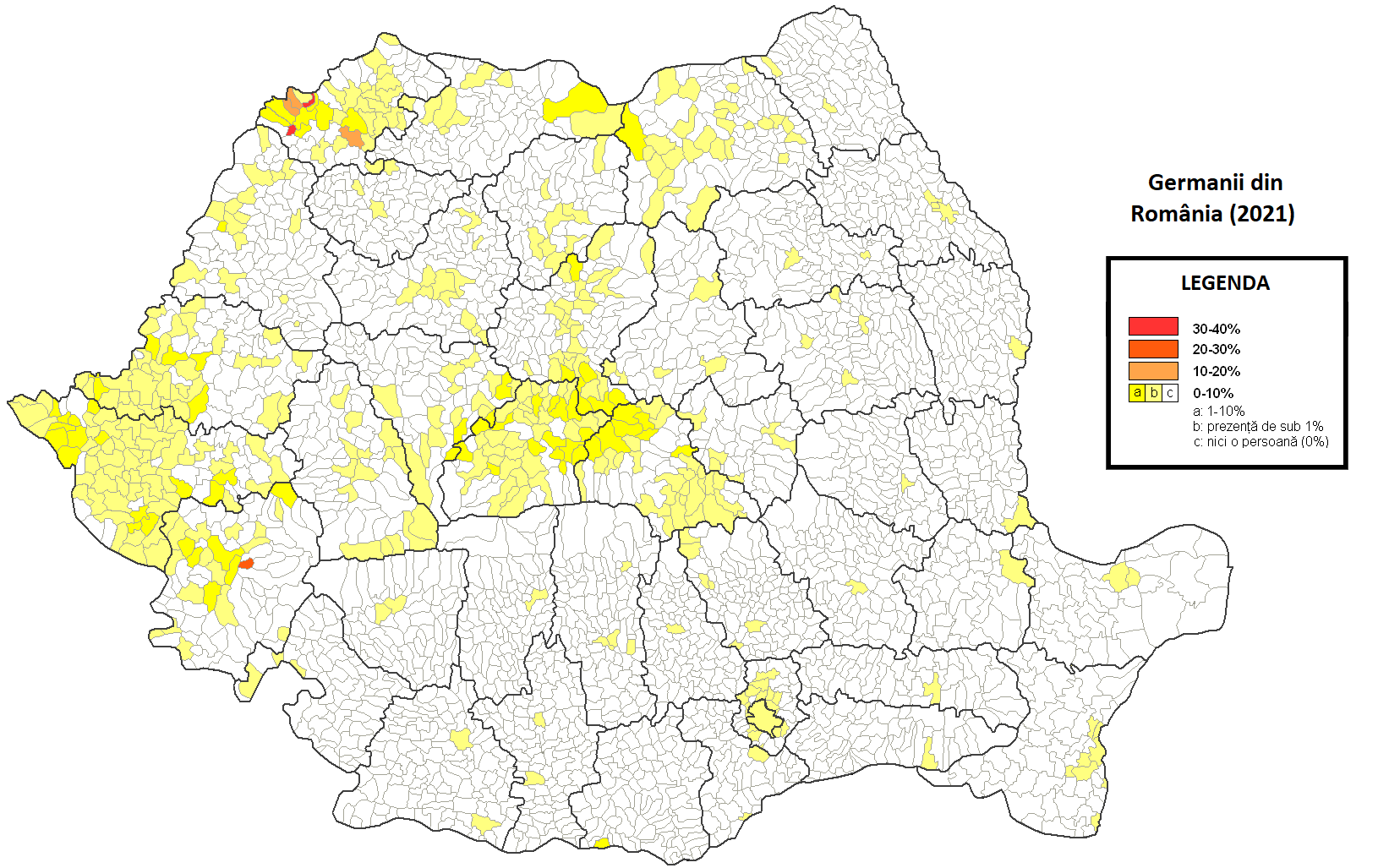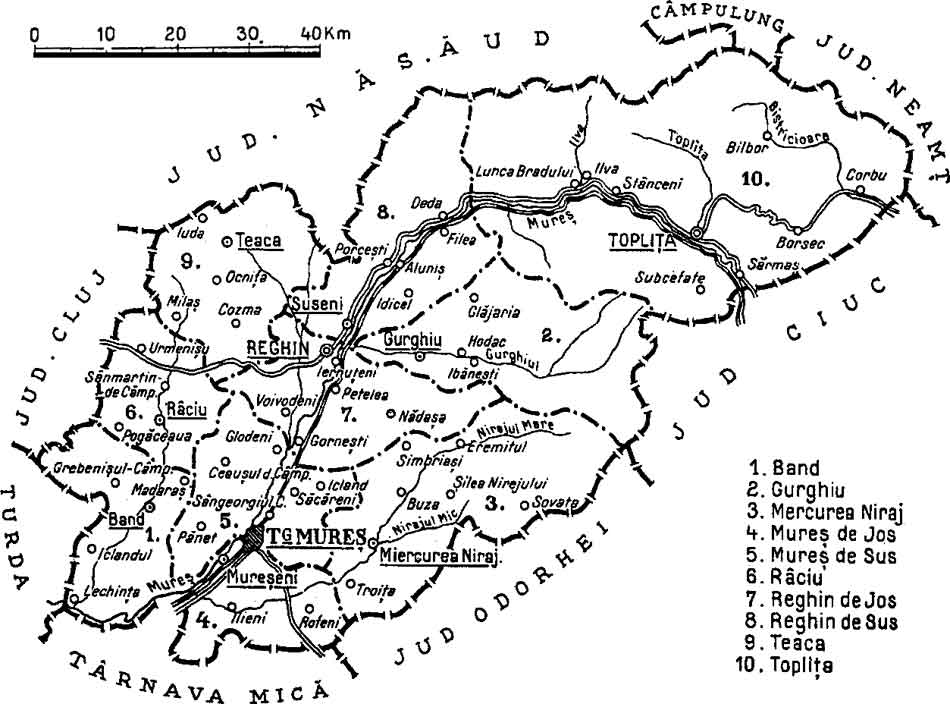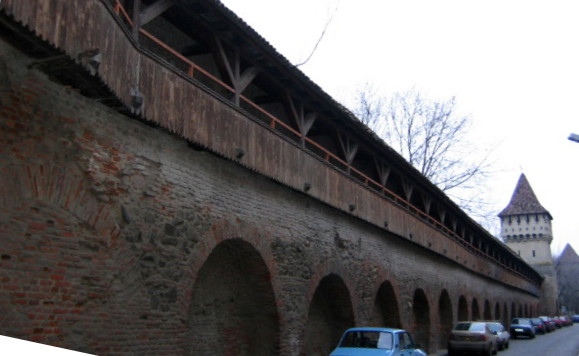|
Târnava, Sibiu
Târnava (; ) is a commune located in Sibiu County, Transylvania, Romania. It is composed of two villages, Colonia Târnava (''Nagyekemezőtelep'') and Târnava (formerly ''Proștea Mare''). Geography The commune is situated on the Transylvanian Plateau. It lies on the banks of the river Târnava Mare, in the northern part of the county, right in between the city of Mediaș and the town of Copșa Mică. The route of the Via Transilvanica long-distance trail passes through the village of Târnava. Demographics At the 2011 census, the commune had 2,858 inhabitants, of which 64.6% were Romanians, 31.5% Roma, 2.7% Hungarians, and 1.1% Germans. At the 2021 census, Târnava had a population of 2,858; of those, 59.83% were Romanians and 26.64% Roma. Transport Târnava is crossed by National Road , which connects the county seat, Sibiu, to Sighișoara in Mureș County. There is also a train station that serves Line 300 of the CFR network, which connects Bucharest with the H ... [...More Info...] [...Related Items...] OR: [Wikipedia] [Google] [Baidu] |
Commune In Romania
A commune (''comună'' in Romanian language, Romanian) is the lowest level of administrative subdivision in Romania. There are 2,686 communes in Romania. The commune is the rural subdivision of a Counties of Romania, county. Urban areas, such as towns and cities within a county, are given the status of ''Cities in Romania, city'' or ''Municipality in Romania, municipality''. In principle, a commune can contain any size population, but in practice, when a commune becomes relatively urbanised and exceeds approximately 10,000 residents, it is usually granted city status. Although cities are on the same administrative level as communes, their local governments are structured in a way that gives them more power. Some urban or semi-urban areas of fewer than 10,000 inhabitants have also been given city status. Each commune is administered by a mayor (''primar'' in Romanian). A commune is made up of one or more villages which do not themselves have an administrative function. Communes ... [...More Info...] [...Related Items...] OR: [Wikipedia] [Google] [Baidu] |
Germans Of Romania
The Germans of Romania (; ; ) represent one of the most significant historical Minorities of Romania, ethnic minorities of Romania from the Modern era, modern period onwards. Throughout Kingdom of Romania#The interbellum years, the interwar period, the total number of ethnic Germans in the country amounted to as many as 800,000 (according to some sources and estimates dating to 1939, just on the verge of World War II), a figure which has subsequently drastically fallen to 36,000 (according to the 2011 Romanian census, 2011 census) and dropped even more to 22,900 (as per the 2021 Romanian census, postponed one year because of the COVID-19 pandemic in Romania, COVID-19 pandemic and conducted in 2022). Following the decreasing trend of the overall population of Romania, the German community of the country is expected to continue shrinking in numbers as well, as it has already been officially reported by the partial results of the 2021 Romanian census, 2021 census. Overview and ... [...More Info...] [...Related Items...] OR: [Wikipedia] [Google] [Baidu] |
Oradea
Oradea (, , ; ; ) is a city in Romania, located in the Crișana region. It serves as the administrative county seat, seat of Bihor County and an economic, social, and cultural hub in northwestern Romania. The city lies between rolling hills on the Crișana plain, on both banks of the Crișul Repede river. The city lies about from the Hungarian border. Oradea is Romania's List of cities and towns in Romania, ninth most populous city (as of 2021 Romanian census, 2021). It covers between the Apuseni Mountains and the Crișana-Banat plain. Oradea is known for its high standard of living and is frequently ranked among Romania's most liveable cities. It is the region's major industrial and economic hub, and hosts several of the country's major industrial enterprises. The city is also renowned for its striking Art Nouveau architecture and is a member of the Réseau Art Nouveau Network and the Art Nouveau European Route. Etymology The Romanian name ''Oradea'' originates from the cit ... [...More Info...] [...Related Items...] OR: [Wikipedia] [Google] [Baidu] |
Hungary
Hungary is a landlocked country in Central Europe. Spanning much of the Pannonian Basin, Carpathian Basin, it is bordered by Slovakia to the north, Ukraine to the northeast, Romania to the east and southeast, Serbia to the south, Croatia and Slovenia to the southwest, and Austria to the west. Hungary lies within the drainage basin of the Danube, Danube River and is dominated by great lowland plains. It has a population of 9.6 million, consisting mostly of ethnic Hungarians, Hungarians (Magyars) and a significant Romani people in Hungary, Romani minority. Hungarian language, Hungarian is the Languages of Hungary, official language, and among Languages of Europe, the few in Europe outside the Indo-European languages, Indo-European family. Budapest is the country's capital and List of cities and towns of Hungary, largest city, and the dominant cultural and economic centre. Prior to the foundation of the Hungarian state, various peoples settled in the territory of present-day Hun ... [...More Info...] [...Related Items...] OR: [Wikipedia] [Google] [Baidu] |
Bucharest
Bucharest ( , ; ) is the capital and largest city of Romania. The metropolis stands on the River Dâmbovița (river), Dâmbovița in south-eastern Romania. Its population is officially estimated at 1.76 million residents within a greater Bucharest metropolitan area, metropolitan area of 2.3 million residents, which makes Bucharest the List of cities in the European Union by population within city limits, 8th most-populous city in the European Union. The city area measures and comprises 6 districts (''Sectors of Bucharest, Sectoare''), while the metropolitan area covers . Bucharest is a major cultural, political and economic hub, the country's seat of government, and the capital of the Muntenia region. Bucharest was first mentioned in documents in 1459. The city became the capital in 1862 and is the centre of Romanian media, culture, and art. Its architecture is a mix of historical (mostly History of architecture#Revivalism and Eclecticism, Eclectic, but also Neoclassical arc ... [...More Info...] [...Related Items...] OR: [Wikipedia] [Google] [Baidu] |
Căile Ferate Române
Căile Ferate Române (; abbreviated as the CFR) was the state railway carrier of Romania. The company was dissolved on 1 October 1998 by splitting into several successor companies. CFR as an entity existed from 1880, even though the first railway on current Romanian territory was opened in 1854. CFR was divided into four autonomous companies: * ''CFR Călători'', responsible for passenger services; * ''CFR Marfă'', responsible for freight transport; * ''Compania Națională de Căi Ferate CFR'', manages the infrastructure on the Romanian railway network; and * ''Societatea Feroviară de Turism'', or SFT, which manages Heritage railway, scenic and tourist railways. CFR was headquartered in Bucharest and had regional divisions centered in Bucharest, Brașov, Cluj-Napoca, Constanța, Craiova, Galați, Iași, and Timișoara. Its International Union of Railways code is 53-CFR. History Railways in the nineteenth century The first railway line on Romania's present-day territory w ... [...More Info...] [...Related Items...] OR: [Wikipedia] [Google] [Baidu] |
Căile Ferate Române Line 300
Line 300 is one of Căile Ferate Române's main lines in Romania, having a total length of . The main line, connecting Bucharest with the Hungary, Hungarian border near Oradea, passes through Ploiești, Brașov, Sighișoara, Teiuș, and Cluj-Napoca. The section between Bucharest and Ploiești is shared with Căile Ferate Române Line 500, CFR line 500. Line 300 makes up part of the TEN-T Rhine–Danube Corridor. In this context, the line is to be greatly upgraded, improving speed, capacity and interoperability (train lengths, European Rail Traffic Management System, ERTMS). The section between Câmpina and Predeal was upgraded between 2007 and 2011, bringing several improvements to the infrastructure along the route. Between 2012 and 2018, the Coșlariu–Sighișoara section was extensively upgraded to speeds of up to 160 km/h, including the construction of bridges and tunnels to straighten out the alignment of the railway. Secondary lines References Railway lines in ... [...More Info...] [...Related Items...] OR: [Wikipedia] [Google] [Baidu] |
Mureș County
Mureș County (, , ) is a county (''județ'') of Romania, in the Historical regions of Romania, historical region of Transylvania, with the administrative centre in Târgu Mureș. The county was established in 1968, after the administrative reorganization that re-introduced the historical ''județ'' (Counties of Romania, county) system, still used today. This reform eliminated the previous Magyar Autonomous Region, Mureș-Magyar Autonomous Region, which had been created in 1952 within the People's Republic of Romania. Mureș County has a vibrant multicultural fabric that includes Székely Land, Hungarian-speaking Székelys and Transylvanian Saxons, with a rich heritage of Villages with fortified churches in Transylvania, fortified churches and towns. Name In Hungarian language, Hungarian, it is known as ''Maros megye'' (), and in German language, German as ''Kreis Mieresch''. Under Kingdom of Hungary, a county with a similar name (Maros-Torda County, ) was created in 1876. There ... [...More Info...] [...Related Items...] OR: [Wikipedia] [Google] [Baidu] |
Sighișoara
Sighișoara (; ; ; Transylvanian Saxon dialect, Transylvanian Saxon: ''Schäsbrich'', ''Šesburχ'', or ''Scheeßprich''; ; or ) is a Municipiu, city on the Târnava Mare, Târnava Mare River in Mureș County, central Romania. Located in the historic region of Transylvania, Sighișoara had a population of 23,927 according to the 2021 Romanian census, 2021 census. It is a popular tourist destination for its well-preserved Historic Centre of Sighișoara, old town, which is listed by UNESCO as a World Heritage Site since 1999. The town administers seven villages: Angofa, Aurel Vlaicu, Hetiur, Rora, Șoromiclea, Venchi, and Viilor. History Starting with the mid 12th century, Germans, German Artisan, craftsmen and merchants known as the Transylvanian Saxons () were invited to Transylvania by the then Kingdom of Hungary, King of Hungary, Géza II of Hungary, Géza II, to settle and defend the frontier of his realm and improve the region's economy. The chronicler Krauss li ... [...More Info...] [...Related Items...] OR: [Wikipedia] [Google] [Baidu] |
Sibiu
Sibiu ( , , , Hungarian: ''Nagyszeben'', , Transylvanian Saxon: ''Härmeschtat'' or ''Hermestatt'') is a city in central Romania, situated in the historical region of Transylvania. Located some north-west of Bucharest, the city straddles the Cibin River, a tributary of the Olt River. Now the seat of Sibiu County, between 1692 and 1791 and 1849–65 Sibiu was the capital of the Principality of Transylvania. Until 1876, the Hecht hause in Sibiu served as the seat of the Transylvanian Saxon University. Nicknamed ''The Town with Eyes'' for the eyebrow dormers on many old buildings, the town is a popular tourist destination. It is known for its culture, history, cuisine, and architecture. In 2004, its historical center was added to the tentative list of UNESCO World Heritage Sites. Sibiu was subsequently designated the European Capital of Culture in 2007, along with Luxembourg City. One year later, it was ranked "Europe's 8th-most idyllic place to live" by ''Forbes''. Sibi ... [...More Info...] [...Related Items...] OR: [Wikipedia] [Google] [Baidu] |
Roads In Romania
Public roads in Romania are ranked according to importance and traffic as follows: *motorways (autostradă – pl. autostrăzi) – colour: green; designation: A followed by one or two digits *expressways (drum – pl. drumuri express) – colour: red; designation: DEx followed by one or two digits and an optional letter *national road (drum național – pl. drumuri naționale) – colour: red; designation: DN followed by one or two digits and an optional letter *county road (drum județean – pl. drumuri județene) – colour: blue; designation: DJ followed by three digits and an optional letter; unique numbers per county *local road (drum – pl. drumuri comunale) – colour: yellow; designated DC followed by a number and an optional letter; unique numbers per county Some of the national roads are part of the European route scheme. European routes passing through Romania: E58; E60; E70; E85; E79; E81; E68; E87 (Class A); E574; E576; E581; E583; E671; E771. ... [...More Info...] [...Related Items...] OR: [Wikipedia] [Google] [Baidu] |
National Institute Of Statistics (Romania)
The National Institute of Statistics (, INS) is a Romanian government agency which is responsible for collecting national statistics, in fields such as geography, the economy, demographics and society. The institute is also responsible for conducting Romania's census every ten years, with the latest census being organised in 2022. Leadership The head of the NIS is currently Tudorel Andrei, while the three vice-presidents are: * Ioan-Silviu VÎRVA, in charge of economic and social statistics * Marian Chivu, in charge of national accounts and the dissemination of statistical information * Beatrix Gered, in charge of IT activities and statistical infrastructure History Romania's first official statistics body was the Central Office for Administrative Statistics (''Oficiul Central de Statistică Administrativă''), established on July 12, 1859, under the reign of Alexandru Ioan Cuza. The organisation, one of the first national statistics organisations in Europe, conducted its ... [...More Info...] [...Related Items...] OR: [Wikipedia] [Google] [Baidu] |





